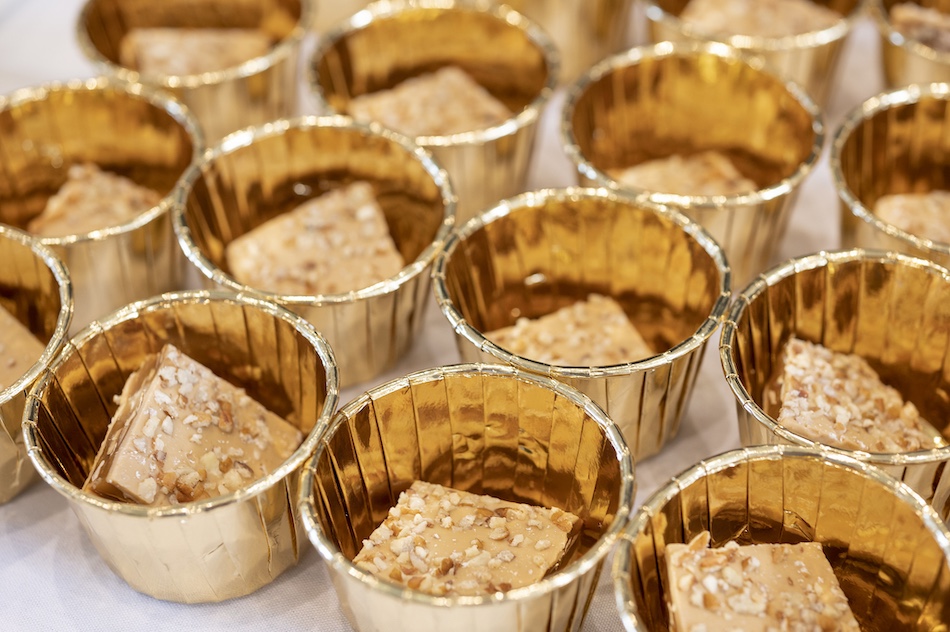Most Vidalia onion lovers choose the Georgia-grown onion because it tastes sweet. University of Georgia scientists are searching for a way to help Vidalia onion farmers guarantee their crop meets consumers’ expectations – sweet, but not too pungent.
“Basically we are trying to get a good measure of pungency,” said Rob Shewfelt, a food scientist with the UGA College of Agricultural and Environmental Sciences and leader of the project. “You’re not going to find a Vidalia onion that is as pungent as a green onion or a red onion, but certain ones are pungent.”
Shewfelt calls pungency “a relative term.”
Does it make you cry?
“When you chew an onion with your mouth closed, you taste the sweetness, then you open your mouth and get the pungency,” he said. “Pungency is what goes up the back of your nose and makes your nose vibrate, whether it makes you cry or makes it feel hot in your mouth.”
UGA scientists are in the final year of the four-year study comparing instruments that measure sweetness and pungency with the views of human trained sensory panelists and untrained onion tasters.
“Years ago, (UGA researcher) Bill Randall used an instrumental method where fresh onions were crushed and measured,” Shewfelt said. “Basically, it measured pyruvic acid and the enzymes and substrates that combine and cause us to tear up.”
Effective but destructive
This method was effective, but destroyed the onions. Chi Thai, a UGA food scientist and member of the research project team, is now searching for nondestructive ways, like infrared scanning, to measure these factors.
And, as part of the study, Norman Schmidt of Kansas’ Tabor College, uses a gas chromatograph. “(Dr. Schmidt) is measuring the factor that makes you tear up. We want to relate that to our sensory data from the human trained panelist,” Shewfelt said.
The scientists selected four Vidalia onion varieties for the study; one with high sweetness and pungency, one with high sweetness and low pungency, one with low sweetness and high pungency and one with low sweetness and pungency.
A trained consumer sensory panel tasted raw onion wedges and selected the two varieties with high sweetness as “superior acceptable.” The panelists ranked the two varieties with low sweetness “unacceptable.”
“The sweetness was the most important factor,” Shewfelt said.
The UGA research team also held a taste test with untrained consumers at the Tate Student Center on the UGA campus in Athens.
Not everyone eats raw onions
“It was very hard to get people to try a sample of a raw onion,” said Maureen McFerson, the graduate student working on the project. “I would ask them if they’d like to do something to help Georgia agriculture today? - not, ‘Would you like to try a piece of raw onion?’”
A native of Washington state, McFerson is accustomed to eating Walla Walla sweet onions. As part of her master’s thesis work at UGA, she met with growers in Lyons, Ga., to get their insight on Georgia’s state vegetable.
“Most of the growers were concerned about the soil and growing conditions, finding out what consumers want and keeping a quality product,” she said. “They also want an easy, nondestructive method to predict acceptability by consumers.”
The research team discovered a “positive relationship between instrumental analysis and a trained panel and between different compounds and acceptability,” she said.
“We found the absence of pungency compounds correlated to a higher amount of consumer acceptability,” McFerson said. “And we made headway toward finding a nondestructive method through the infrared method and mathematical models.”
The research team has more work to do before either method can be applied in the industry.
Not ready yet
“In the long term, we want to find an instrumental method that can discriminate against various onions. If one is too pungent, it will be kicked out and not sold raw. It can be used another way,” he said. “We know there are ways to identify pungency and sweetness, so you will be assured that the ones you get are of lower pungency.”
McFerson now prefers Vidalia onions to Walla Wallas.
“Unlike peanuts, cotton and peaches, consumers know that they are supporting Georgia agriculture when they purchase a Vidalia onion,” she said. “Like with Champagne in France, the onions must be grown in certain counties in south central Georgia to be the labeled Vidalia.”
For more on Vidalia onion research at UGA, see the website at caes.uga.edu/commodities/fruits/vidalia.








